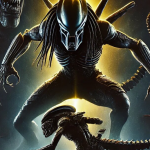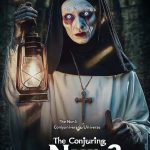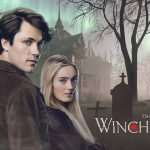📹📹The Witch (2015)🔥🔥🔥
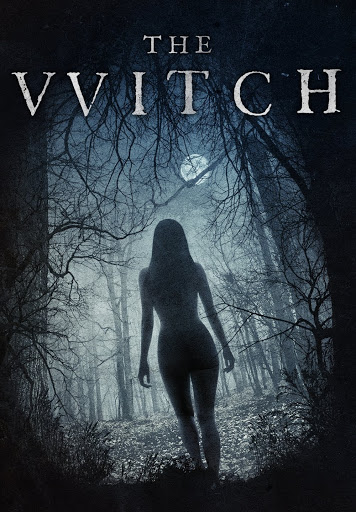
**”The Witch” (2015)** is a psychological horror film directed by Robert Eggers in his feature film debut. The movie is subtitled “**A New England Folktale**,” and it draws heavily on historical and cultural elements from the 17th century to create a deeply unsettling and atmospheric experience. The film is praised for its authenticity, slow-burn tension, and exploration of religious fanaticism, isolation, and the fear of the unknown.
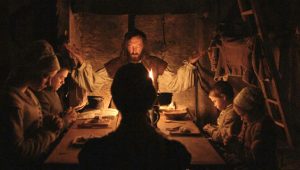
Set in 1630s New England, the story follows a Puritan family that has been exiled from their plantation community due to religious disagreements. The family—consisting of father William, mother Katherine, eldest daughter Thomasin, son Caleb, and twins Mercy and Jonas—settles on the edge of a remote forest, attempting to build a new life in isolation. However, their new home soon becomes the site of strange and terrifying events.
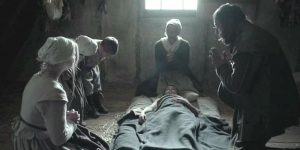
The film begins with a traumatic event: the family’s newborn son, Samuel, mysteriously disappears while under Thomasin’s care, vanishing almost instantly while she plays peekaboo with him. Unbeknownst to the family, Samuel has been abducted by a witch living in the nearby woods, who uses the infant in a dark ritual. This event sets the tone for the rest of the film, as suspicion, fear, and paranoia begin to tear the family apart.
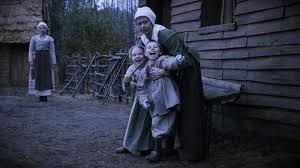
As their crops fail and their livestock behave strangely, the family starts to believe they are cursed. Tensions rise, and the parents increasingly blame Thomasin for their misfortunes. Thomasin, in turn, becomes the focus of the family’s suspicion, particularly from the twins, who claim to speak with the family’s goat, Black Phillip. The goat becomes a symbol of the family’s growing descent into hysteria and the manifestation of evil in their lives.
The film meticulously portrays the family’s struggle with their faith and the harshness of their environment. William, the patriarch, is determined to maintain his authority and piety, but his own pride and stubbornness lead the family deeper into despair. Katherine is consumed by grief and paranoia, fixating on Thomasin as the source of their suffering.
**”The Witch”** builds its horror through atmosphere, rather than overt scares. The film’s dialogue is drawn from period texts, and the characters’ strict adherence to their Puritan beliefs amplifies the psychological tension. The cinematography, with its bleak, natural lighting and cold color palette, enhances the feeling of isolation and doom.
As the family’s situation deteriorates, Caleb ventures into the woods and encounters the witch, leading to his mysterious return and subsequent death, which further escalates the family’s fear and suspicion. The film explores the destructive power of fear, religious extremism, and the dangers of scapegoating, as the family turns on one another, with Thomasin bearing the brunt of their growing madness.
The film’s climax is both shocking and inevitable, as the twins accuse Thomasin of witchcraft, and in a tragic turn of events, she is left alone after the deaths of her family members. In the final moments, Thomasin, desperate and alone, is visited by Black Phillip, who reveals himself as the Devil in disguise. He offers her a chance to escape her miserable life and live “deliciously,” tempting her to sign her name in his book and join the coven of witches in the forest.
**”The Witch”** ends with Thomasin, now fully embracing her fate, joining the witches in the woods as they celebrate around a fire, floating into the air in a dark, supernatural ritual. The film’s conclusion leaves audiences with a sense of unease, as it suggests that Thomasin’s turn to the dark side is both a tragic consequence of her circumstances and a final act of liberation from her oppressive life.
**”The Witch”** was widely acclaimed for its authenticity, unsettling atmosphere, and strong performances, particularly by Anya Taylor-Joy in her breakout role as Thomasin. The film’s exploration of themes like religious fanaticism, the fear of female independence, and the destructive power of isolation has made it a modern horror classic.
Eggers’ meticulous attention to detail, from the historically accurate set design to the period-appropriate language, creates a world that feels both distant and terrifyingly real. The film stands out for its slow, methodical pacing and its focus on psychological horror, making it a deeply disturbing and thought-provoking experience that lingers long after the credits roll.






